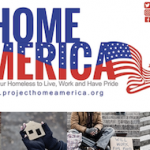SANTA ROSA — Every night for the past week and a half, Christopher Tanael’s downstairs living room, which doubles as a dining room, transforms into a bedroom for four with bedding sandwiched between the couch and the TV.
Tanael’s family of five is already squeezed into the roughly 900-square-foot apartment, sharing two bedrooms. Now, they are nine, having taken in his sister, Cristalyn Robles, his mother, brother-in-law and 7-year-old nephew — all of whom fled the Tubbs fire that ravaged Sonoma County.
Like thousands of others whose homes and ways of life were upended by fires in Sonoma, Napa and Mendocino counties earlier this month, the Robles family is unsure where to go next, managing each new obstacle one day at a time.
“We are sleeping on the floor because they don’t have space for us,” said Cristalyn Robles. “It’s comfortable for us, but of course, we will have to find a home.”
“Where?” is the big question invading every waking moment. The people who are displaced, whether they own or rent, are facing an expensive Bay Area real estate market, fueled by an already severely limited housing stock. Families with children hope to keep their kids in the same school district. Those with pets or farm animals have the extra burden of finding rentals that will accept them.
Together, the Tubbs, Pocket, Sonoma, Nuns and Atlas fires destroyed a total of 5,017 structures, though officials have yet to identify how many of those were single family homes, apartments or condos, meaning the full extent of lost housing has yet to be determined.
And for those who are still grappling with the shock and trauma of running from burning homes and losing everything, it can be difficult to know where to start when it comes to rebuilding their lives. The task is further compounded by the distances many are traveling between temporary homes and the local assistance centers in Napa and Sonoma counties, which serve as one-stop shops for people seeking resources from federal, state and local agencies, as well as nonprofits offering assistance.
David Mathiesen and his family of five are living in Oakland because the relocation company assigned to their insurance carrier couldn’t find any space closer to their burned home in Larkfield, just north of Santa Rosa city limits. The Patel family, which includes three children and three grandparents for a total of eight people, found space with friends in Marin County, though it’s not a long-term solution.
Rick Olcese and his family of nine, plus six dogs, are camped out in a cabin near Sebastopol. The phone and internet service is spotty, so they’ve been coming into town each day, he said, to make calls and file claims. Every night, his family shares what resources they’ve been able to access or what information they’ve been able to gather, Olcese said. And, each morning, they sit down to plot a plan for their day.
“Otherwise, you lose structure and you don’t know what to do and you don’t know where to go,” he said.
Olcese said some days are better than others. There are insurance companies to call, FEMA claims to file, clothes to buy, housing to look for, clients from his neuropsychiatry business to contact, utilities to cancel and more. It can be overwhelming.
“(I’m) just trying to walk through it and do it at a pace that you can get it done,” Olcese said. “At some times of the day, it feels like I haven’t gotten anything done yet, and I have to do this and this and this.”
For renters, especially those without insurance, it’s even less clear where to turn next. Many showed up at the local assistance center in Santa Rosa to file claims with FEMA, but they are largely on their own when it comes to finding new places to rent.
Already, Erin Klauenburch, a renter displaced from his Fountain Grove home in Santa Rosa, said he has seen prices for rental homes on Craigslist jump dramatically. He had been casually looking to move before the fire and said he saw a home first listed for $3,200 per month rise to $8,400 after the fire. So, he’s been splitting his nights between his parents’ house and the floor of his hydroponics business in Healdsburg.
“It’s crazy out here trying to find a place to rent,” Klauenburch said.
In Sonoma County, officials are promoting its Shared Housing and Resource Exchange program, or SHARE, which was initially designed for homeowners aged 60 or older, though it could be used by anyone with extra space in their homes. It allows the homeowner to post available rooms, and helps people seeking a room get matched with a landlord by either entering into a traditional lease agreement or exchanging some clearly defined services the renter provides, such as meal preparation and driving the homeowner to appointments.
Sonoma County Supervisor James Gore, whose district includes the now-devastated Coffey Park community, said the county, along with federal, state and local officials, is looking at the possibility of creating some form of mass housing, particularly for those with jobs in the area, while residents rebuild. Those could be modular homes constructed on county or city land, though Gore said the details of that plan are still in their infancy.
“I’m going to focus my time and attention on the 3,000 houses that burned down (in my district) that are workforce (housing),” Gore said. “First, we need to identify what the number is that needs it: who’s not living with a family member, who would want to live in a temporary living situation like that.”
Once the building begins, Gore said he’s open to “every option” when it comes to relaxing regulations to speed up the construction process, as well as allowing homeowners to construct granny or in-law units on their property, or even apartment buildings, to ease the existing housing crunch.
“At this point, I feel like we throw all the rules out,” he said. “We don’t want this to create a mass exodus.”
In the short term he said the county is focused on creating incentives for those with vacation homes to open their residences to people displaced by the fires. Similarly, in Santa Rosa, Vice Mayor Jack Tibbetts said officials are partnering with Craigslist and Airbnb to get residents to open spare bedrooms and in-law units to activate otherwise idle spaces.
Though the City Council has not met since the fires, Tibbetts said he expects a flurry of new housing policies, including reducing building-related fees and relaxing laws that could slow development. There are multiple housing projects in the pipeline, and they are needed now more than ever, he said.
“I got to believe the political will is here,” Tibbetts said.
Those fortunate enough to find rental homes in the immediate wake of the fires routinely said they found them through friends or relatives. Others said they had been turned away for the same reason: Landlords were granting the right of first refusal to people within their social networks who had lost homes in the fires.
Josef and Jana Kyntl were able to move into their daughter’s rental property in Santa Rosa while they begin the arduous rebuilding process. They’ve slowly been making progress buying new furniture — a bed and a television set, so far — as well as contacting their insurance company and determining next steps.
For the Kyntls, who immigrated from the Czech Republic to New York in 1970 and took a blind leap of faith when they moved to Santa Rosa sight unseen two years later, it wasn’t just the home they lost; it was the 40 years of long hours working to build a new life for their family in their new, adopted country that turned to ash and dust in the fire’s wake.
They vowed to rebuild, even though they know the grueling process could take two years or more. On Tuesday, they said they hadn’t yet begun speaking to architects or contractors and were still waiting to get information from their insurance company. Still, they were optimistic.
“Like I tell my friends from New York: Remember, we came here with no English and no money and one suitcase, and we made it,” Jana Kyntl said. “We will make it now, too.”







